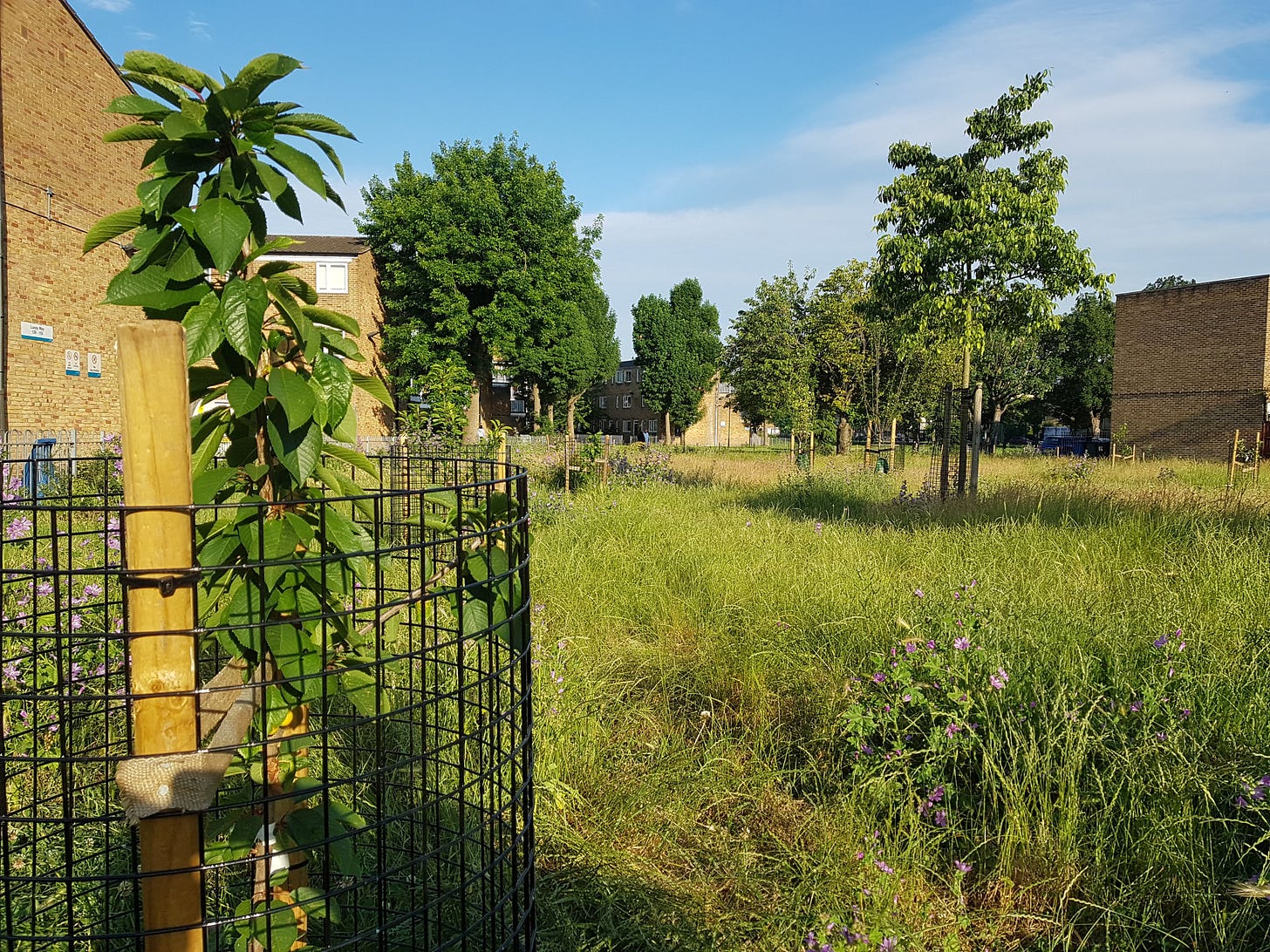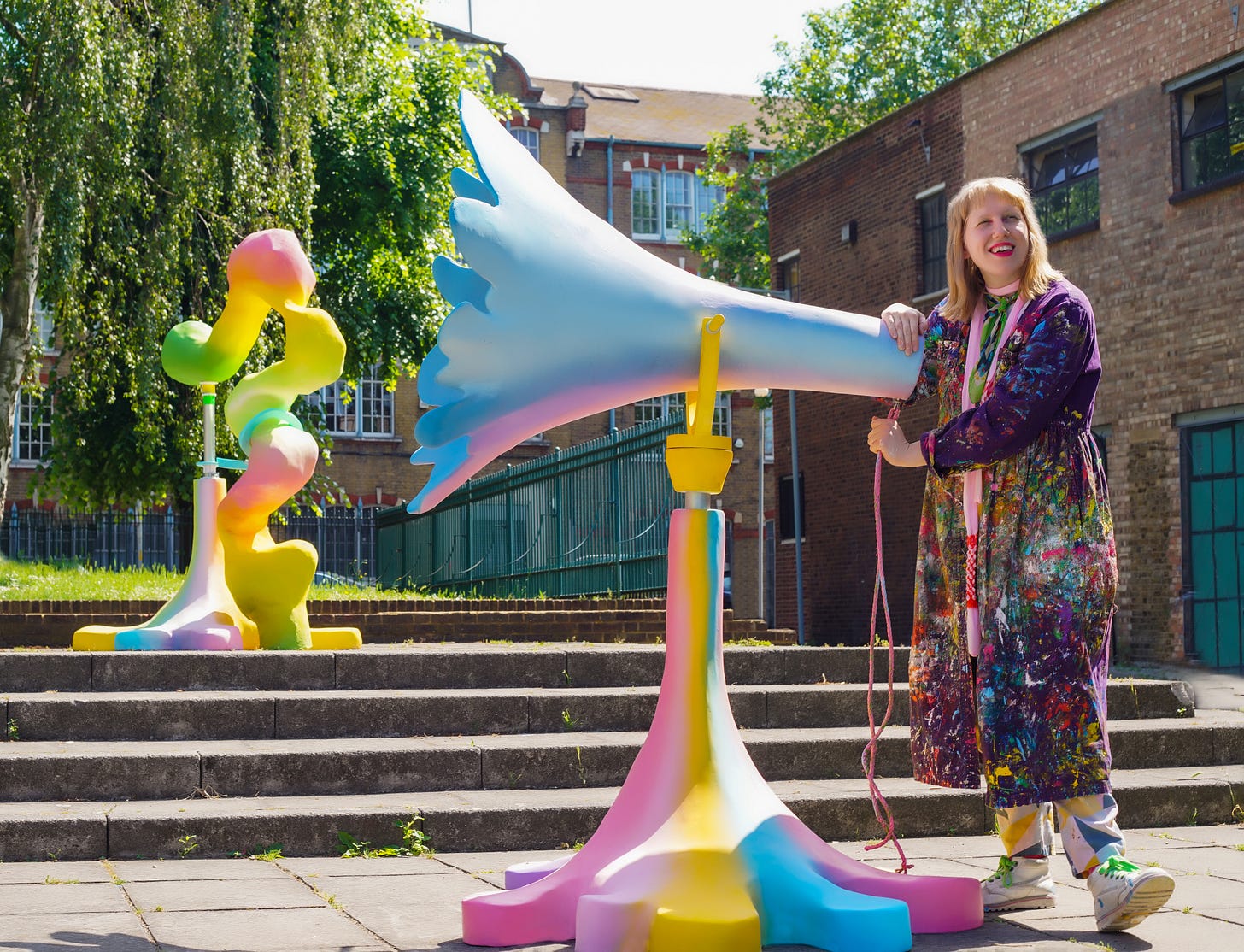‘Is that a lemon tree? In London?’. I'm on a guided tour of community orchards and fruit trees in south London. Something about this lemon tree, growing casually in a city garden 3,000 kilometers from its homeland, captures the group's imagination. Our guide, Divya, is a London National Park City Ranger and she explains that the owners brought the tree back from Cyprus 40 years ago so they could have a piece of home in their front garden. And it has been bearing citrusy sweet fruit ever since.
Divya explains that once you start looking for them, fruit trees are practically everywhere in London and they often have fascinating and personal stories behind them. Growing alongside popular fruits like apples and pears are more exotic varieties like avocado, pomegranate and banana trees. Against all odds, they thrive in the city's balmy microclimate. She’s been chronicling their locations and stories on her Instagram page, ‘Fruity Walks’.
She muses, ‘There is just something unexplainable of being able to see a piece of fruit grow, and you realise how long it takes for that piece to grow from seed to mouth’.
The magic of urban fruit trees inspired Rangers Divya and Lesley to work with their local community and Borough council to transform two forgotten spaces in their neighbourhood into community orchards. Once fully established, the orchards will be a place for the community to meet and connect with nature, and for school children to learn about food growing. The organisers are also keen to establish an annual harvest party, revitalising a rural tradition in the middle of the city.
As the Covid-19 pandemic forced many of us to work from home, local parks and walking routes became lifelines. Suddenly living near a good quality green or blue space felt not only like a perk, but a basic requirement for our physical and mental health. This rediscovery of the nature around our homes has also highlighted how our city centres and places of employment can often be barren and grey. But what if you lived and worked in a National Park City like London?
We all know about the great National Parks of the world; Yellowstone, Victoria Falls, the Peak District. Notice that none of these are in cities? So, why not? Mapping of London reveals that 49.5% of its surface area is green and blue, including forests, back gardens, swimming ponds and urban farms. The city is home to 15,000 species (alongside Homo Sapiens) and the density of trees means that London could technically be considered a forest.
Recognising this diversity of life in the city, a group of Londoners came together in 2014 to ask a simple question: what if we treated London as if it was a national park? After years of tireless campaigning by this grassroots movement, London was designated the world’s first National Park City in 2019 by the Mayor.
London National Park City - as a place, a vision and a movement - exists to connect people to the nature around them and make the city greener, healthier and wilder. This is biophilia at the city scale.
That’s where the Rangers come in. I know what you’re thinking, and no, they don’t ride around on horseback or wear a special hat. In fact, it’s very hard to describe what a typical Ranger looks like or does. Among the cohort of 150 volunteers are artists, teachers, engineers, ecologists, musicians and green-fingered community organisers.
Rangers work in their local communities and across the city on projects to tackle the climate and ecological crises, scale greening initiatives and conservation activities, run education and youth programmes, improve access to green and blue space and inspire Londoners to connect with nature.
Ranger Alisa creates nature-inspired artwork from upcycled materials, to encourage people to engage with non-human life. Ranger Allan in west London teaches orienteering skills to young people in city parks, showing you don’t need untouched wilderness to get lost in nature (and presumably find your way again). Rangers Paula and Katie run forest school programmes across London to ensure city kids get the chance to explore and learn from nature. Ranger Mike founded the London Fungus Network, which connects Londoners with the urban Fungal Kingdom (or Queendom) through mushroom forays, workshops and art that inspire people to look at nature in a different way.
Although London boasts an enviable network of natural spaces, access to them is often uneven, with deprived and marginalised communities living in the greyest neighbourhoods. Like Divya and Lesley, many Rangers are actively creating new green spaces and biodiversity in the city. For instance, Rangers Luke and Charles are greening leftover urban spaces in north London with a range of community projects, including establishing a local nature reserve. They tell me that the land had to be cleared of decades of illegal dumping, which uncovered amongst other things, a still intact crisp packet from the 1980s and the chassis of a car. The nature reserve is now home to a huge variety of birds and insects that otherwise would struggle to thrive in the concrete jungle.
These are just a few examples of the vast array of initiatives and activities created by ordinary Londoners. And you don't need to be a Ranger to get involved. Anyone can be a part of London National Park City - in fact, that's the point.
The success of London National Park City has inspired others around the world. In 2021 Adelaide became the second city to be formally designated as a National Park City, and the ambition is to realise 25 National Park Cities around the world by 2025. Other cities with active campaigns include Galway, Newcastle and Christchurch. What about your city? What would change if you considered it a national park?
You can start by simply slowing down and exploring the urban nature around you. You may even get some lemons out of it.
Learn more at: https://www.nationalparkcity.london/
This article first appeared in the Journal of Biophilic Design Magazine in October 2022.








Good to see you here, Ross. What a wonderful idea the National Park City is! Best of luck on this new writing venture 🍀